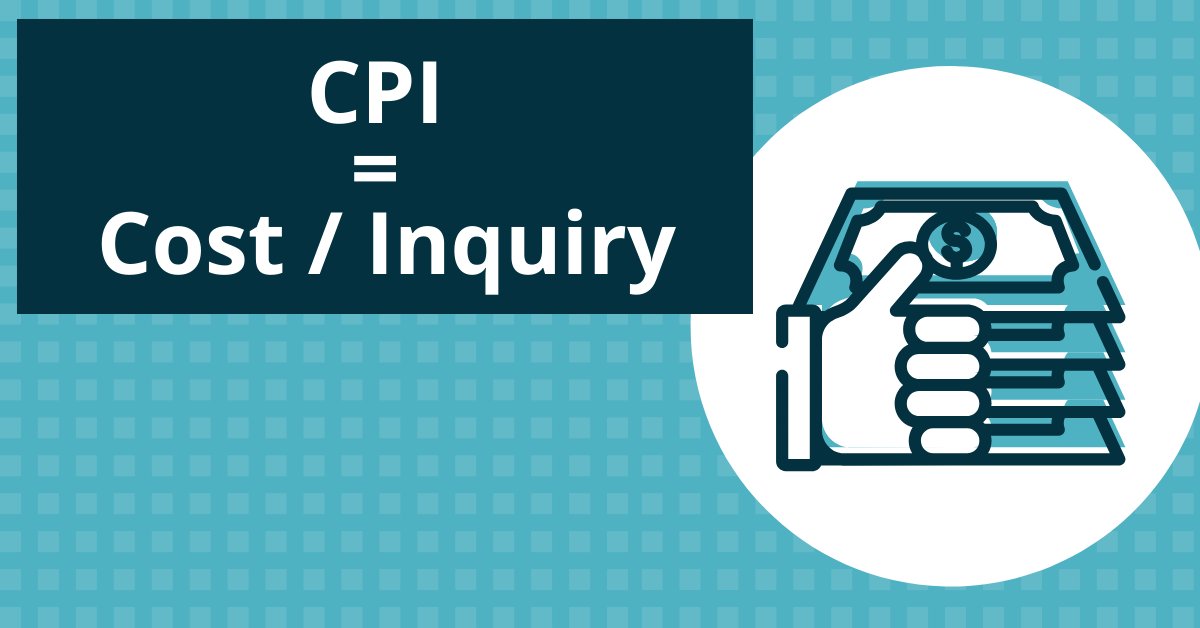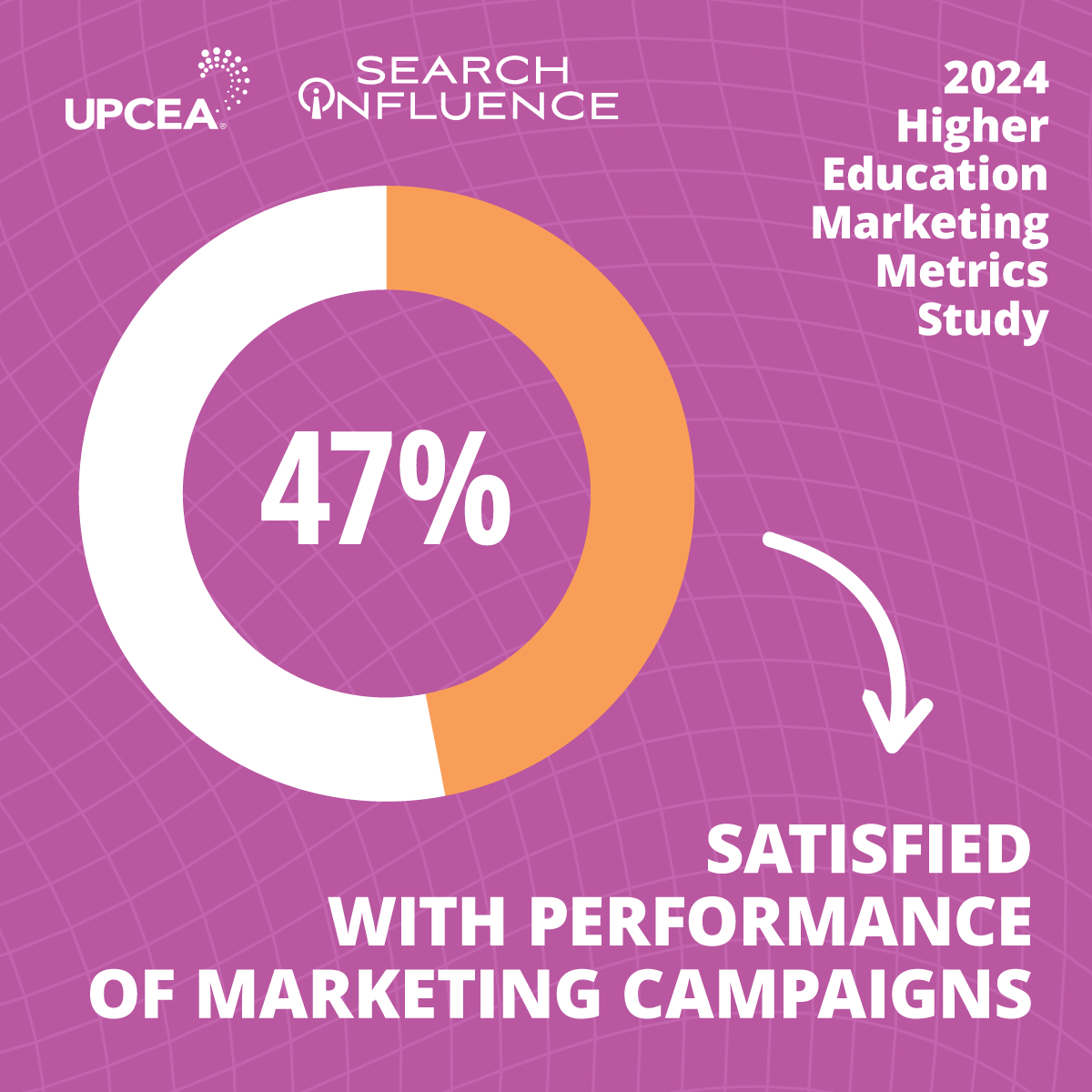What’s Included in Higher Education Cost Per Inquiry (CPI) for Marketing?
September 17th, 2024 by
- Properly calculating CPI is vital for higher education institutions to gauge the effectiveness of their marketing efforts and avoid inefficiencies.
- To gain a complete picture of their marketing costs and CPI, institutions must consider all related expenses, including media spend and staff salaries.
- Implementing advanced tools like CRM systems can significantly improve the accuracy and effectiveness of CPI tracking, leading to more strategic decisions.
- Utilizing resources like Search Influence’s CPI worksheet grants institutions more precise assessments of the state of their CPI.
Every dollar spent on higher education marketing is a step toward shaping your institution’s future. But how do you know if those steps lead you in the right direction?
Accurately calculating cost per inquiry (CPI) as a key performance indicator reveals the true impact of your marketing efforts and drives strategic decisions that shape your institution’s success.
Despite the critical role of CPI tracking, our 2024 Search Influence x UPCEA Research Study found that fewer than half (46%) of the institutions surveyed actively monitor CPI for their professional, continuing, and online (PCO) programs. This oversight can lead to missed opportunities, wasted budgets, and stagnant enrollment numbers in the increasingly competitive educational sector.
To help you assess the effectiveness of your marketing spend, we’ll explore what’s included in marketing CPI and how to accurately calculate higher ed CPI costs.
All the Costs You Should Consider When Calculating Cost Per Inquiry
To remain competitive, higher education marketing departments must be well-equipped to systematically track and analyze critical metrics like CPI. These insights are essential for making informed, data-driven decisions that optimize budget efficiency and fuel impactful strategies.
At its core, CPI for higher education marketing is an invaluable measure of this efficiency, quantifying the amount spent on digital advertising to generate each student inquiry.
Such inquiries typically come from various sources, such as request-for-information forms, brochure requests, or visit requests to your institution. They might also generate from your email campaigns.
While it’s important to know the source of your inquiries, it’s equally important to measure the total investment required to secure a prospective student’s enrollment. These costs vary depending on your institution’s budget strategy, but most frequently entail:
- Media Spend: The total cost associated with purchasing advertising space across various platforms to generate student inquiries.
- Agency Fees: Payments made to external marketing agencies for their expertise and services in executing and managing digital marketing campaigns.
- Marketing Team Salaries: The compensation provided to in-house marketing staff who plan, execute, and monitor marketing strategies aimed at driving inquiries.
- Additional Marketing Efforts: Any other expenses related to higher education marketing activities, such as email and SMS campaigns, virtual events, and open houses.
Why Is Tracking Higher Ed CPI So Important?
Tracking CPI is a non-negotiable for institutions who want to enhance their marketing efficiency and align strategies with successful campaigns. Here’s why:
- Gain Valuable Insights: By leveraging CPI metrics, your marketing department can identify which campaigns drive the most inquiries and enrollments, helping to focus efforts on the most effective strategies.
- Identify Successful Trends: Tracking these metrics allows your institution to spot successful trends within its target audience. Recognizing these patterns enables you to replicate effective strategies, ensuring your campaigns are continuously refined based on fresh data.
- Improve Budgeting Decisions: CPI metrics play a significant role in guiding budgeting decisions. By understanding which campaigns generate the most inquiries at the lowest cost, you can allocate resources to maximize your marketing budget.
- Maximize Enrollment Success: Prioritizing campaigns that deliver high inquiry rates at a low cost optimizes your budget and increases the likelihood of meeting or exceeding your enrollment goals.
However, without accurately tracking CPI, even the best strategies can fall short — leaving your institution stuck in strategy blindspots that hinder true growth and success.
How to Accurately Calculate Higher Ed CPI Costs
Accurately calculating CPI costs often involves utilizing advanced tools like customer relationship management (CRM) systems or applicant tracking systems. These technologies streamline the process of managing inquiries and tracking their progress through your enrollment pipeline.
A CRM system is designed to manage interactions with potential and enrolled students. It offers a centralized platform to monitor essential metrics such as the source of inquiries, CPI, and cost per enrolled student. The data provided by a CRM is indispensable for understanding the full scope of your marketing efforts and ensuring that no inquiry falls through the cracks.
In fact, 74% of businesses report that CRM technology provides better access to customer data, which, in turn, enhances decision-making processes. For higher education marketers, this means more precise tracking of where your inquiries come from and how much your institutions spends to generate each one.
Benefits of using a CPI worksheet for higher education
To assist institutions in calculating and managing their CPI, we offer a free CPI worksheet specifically for higher education. This tool can help you better understand your costs and streamline your tracking processes by providing:
- Confidence in Results: By using a CPI worksheet, you’ll have confidence that you’re driving the right amount of inquiries and achieving the desired outcomes. It helps you quantify your marketing efforts and ensure that your resources are being utilized effectively.
- Benchmarking: Our CPI worksheet allows you to evaluate your institution’s performance against broader industry standards. According to our Higher Education Marketing Metrics Research, the online and professional education CPI benchmark is $140. This benchmarking helps you identify areas where you may overspend or where there is room for improvement.
- Vendor Evaluation: If your institution works with third-party vendors, you can use our CPI worksheet to assess whether their promises are realistic and then measure their performance against the actual results to make informed decisions about future collaborations.
Ready to start calculating your school’s higher ed CPI? Download our free CPI worksheet for greater chances of more precise calculations.
How Better CPI Tracking Can Boost Higher Ed Enrollment
Despite the clear benefits of tracking marketing metrics like CPI, our research found that less than a third of higher education marketing leaders are satisfied with their ability to track the success of their campaigns.
This lack of tracking can directly impact the effectiveness of marketing strategies and, ultimately, enrollment outcomes.
Only 47% of our research survey respondents expressed satisfaction with their marketing campaigns’ performance, and a significant portion (31%) of marketing departments struggled to correlate their marketing success with enrollment numbers. This gap underscores the importance of tracking higher ed CPI costs effectively, which can provide the data needed to advocate for additional resources and optimize your budget.
By improving CPI tracking, your institution will have more accurate forecasts and refine its marketing strategies to focus on efforts that yield the best results.
Search Influence Can Help You Evaluate Your Higher Ed CPI Costs
Without a clear understanding of CPI, it’s challenging to allocate resources effectively or measure the success of your campaigns.
At Search Influence, we bring extensive experience in higher education marketing, helping institutions like yours achieve measurable results. In just one of our success stories, we assisted Palo Alto University in increasing its monthly inquiries by 49% in one quarter — well surpassing the institution’s initial goals.
If you’re looking to optimize your school’s CPI and improve your marketing outcomes, let our experienced team help make it happen. Our tenure in higher education marketing, combined with tools like our CPI worksheet, can guide your institution toward more efficient and effective marketing.
Download our CPI worksheet to gain valuable insights and start making data-driven decisions today.





